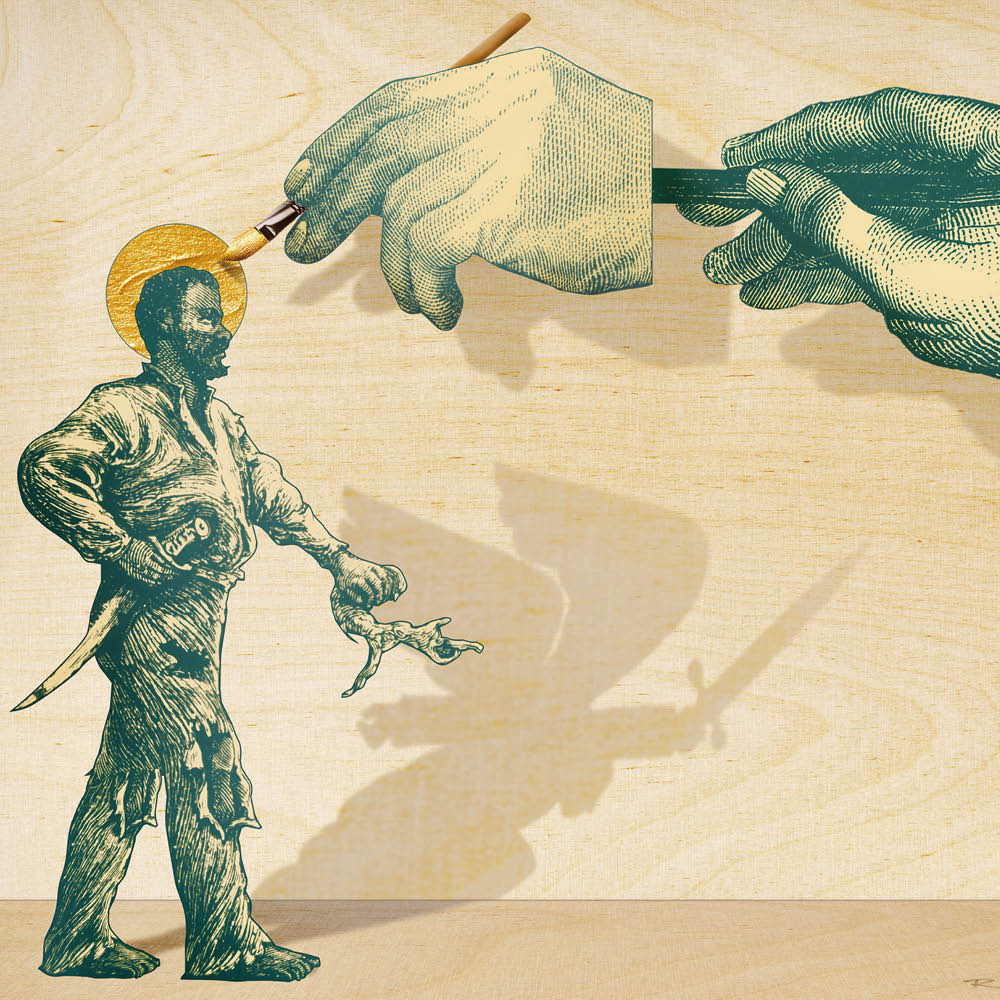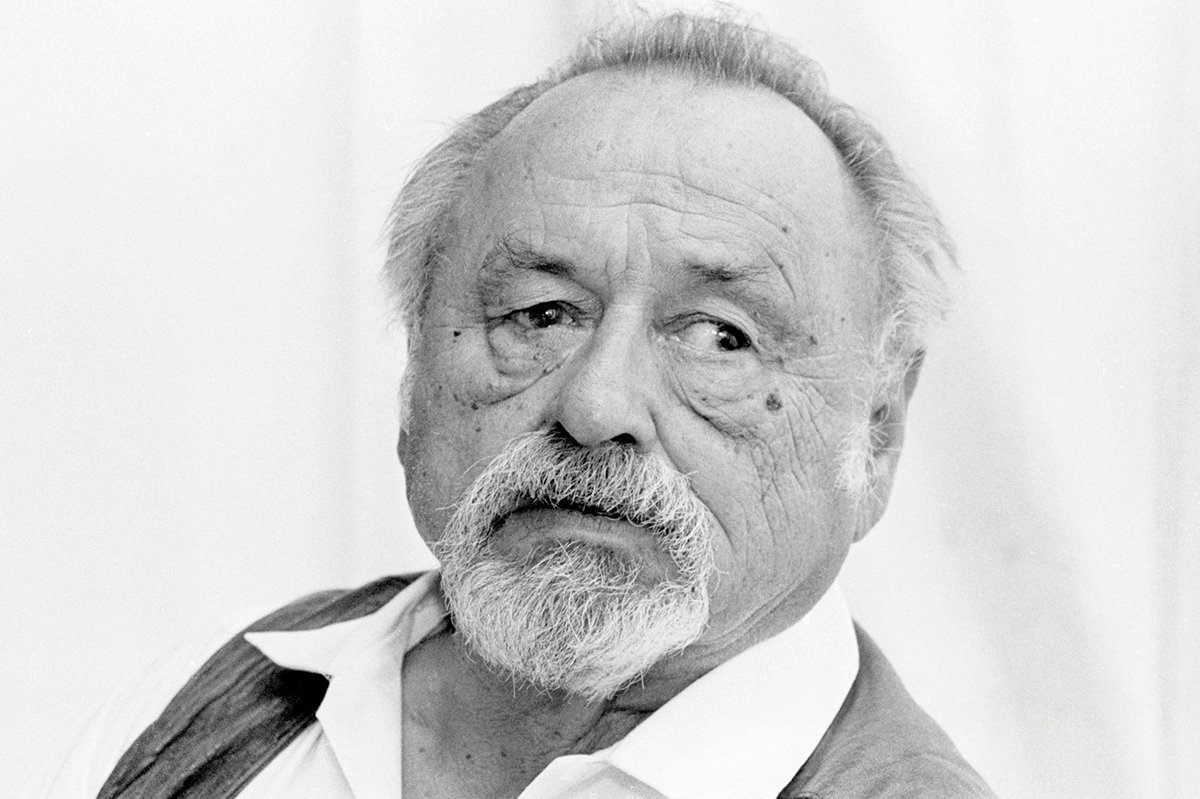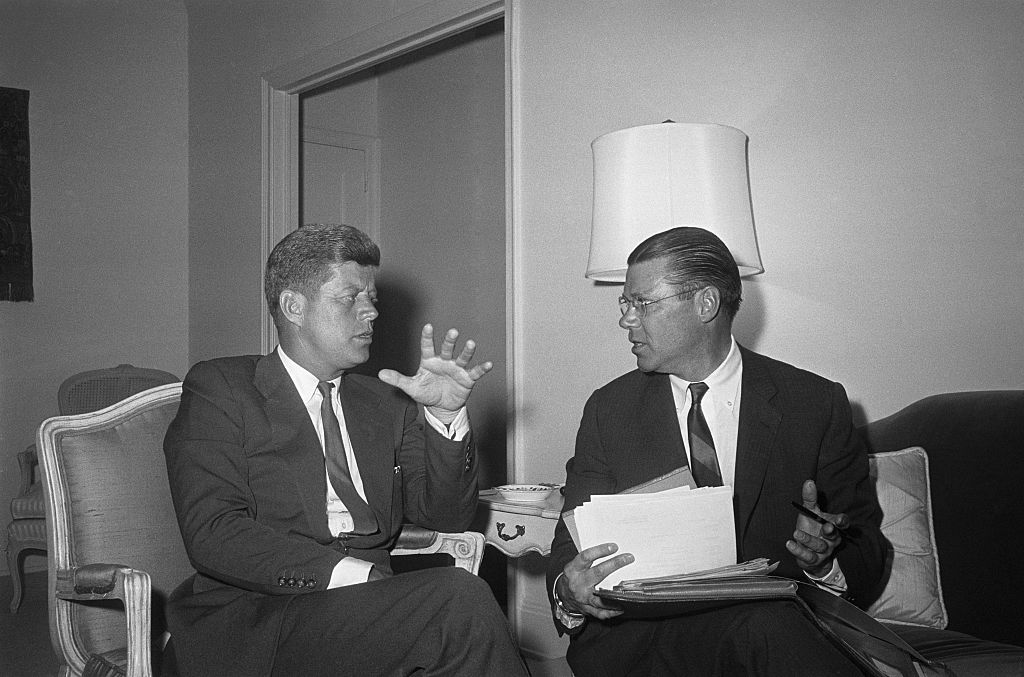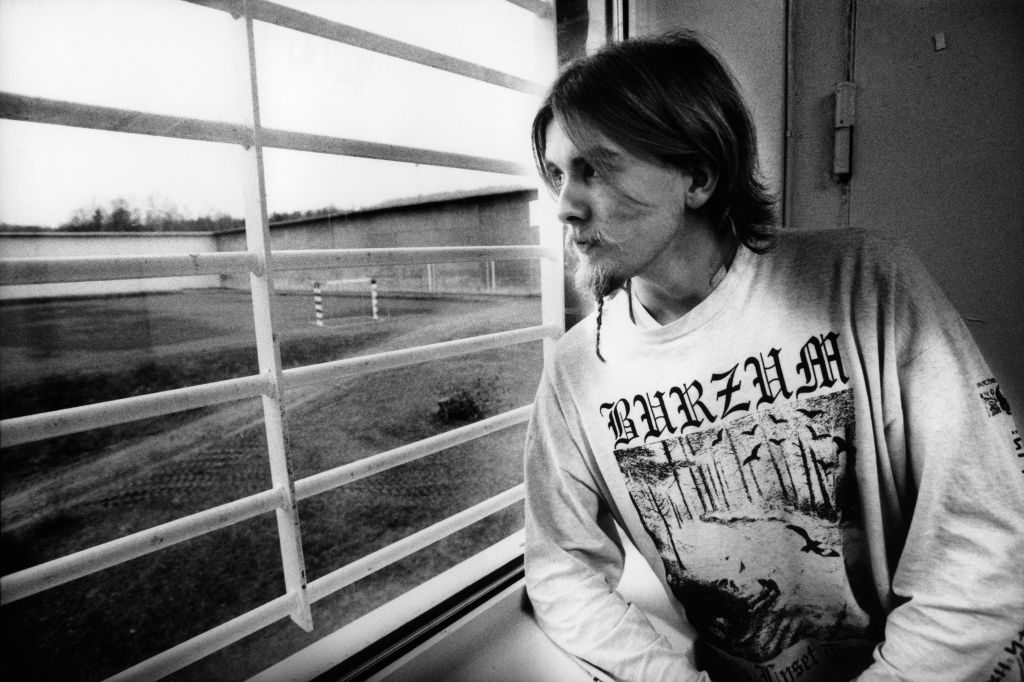In 1831, while the slave rebel leader Nat Turner sat in jail awaiting trial in Southampton County, Virginia, he was visited by a local lawyer named Thomas Gray. Turner spoke at length to Gray, who subsequently published his record of their conversations. At one point Turner said he had been visited many years before by the spirit. “What do you mean by the spirit?” Gray asked. “The Spirit that spoke to the prophets in former days,” Turner replied. Gray was unmoved by Turner’s claims of divine inspiration and concluded that he was a “gloomy fanatic” moved to mass murder by religious delusions.
By contrast, historian Anthony Kaye takes that remark as the point of departure for his new biography Nat Turner, Black Prophet: A Visionary History that seeks to reframe the life of the famous slave rebel in the context of his religious beliefs. Turner has had many biographers since his execution that November. But Kaye argues that, by going deeper into Turner’s religious world, he has been able to break new ground.
Assessing whether Kaye has succeeded is hampered by two facts, neither of which is his fault. The first is the nature of the source material. The core document in any history of Turner’s life is his “confession” to Thomas Gray, a white slaveowner from the area Turner’s revolt had threatened. Whether or not Gray faithfully recorded Turner’s account is the question that looms over this and every other study. The second problem lies in the history of this biography. Anthony Kaye died in 2017. He had been working on this book for several years at the time of his death and made preparations beforehand for it to be completed by historian Gregory P. Downs.
In his postscript Downs notes that, consequently, “this book is an act of multiple ventriloquisms. Tony, through his deep knowledge of history, hoped to explain the context of Nat’s words, which themselves were ventriloquized through Thomas Gray. I, less successfully, tried to reconstruct the meaning of the words that Tony left behind.” Downs insists that this is Kaye’s book and he has merely acted as the interpreter for “the product of his intelligence and creativity.” As readers, we can only take Downs at his word while saluting his indefatigable work on behalf of his deceased colleague. All the same, this blurring of authorial voices and intentions only further dramatizes the larger problem of writing about Nat Turner, a man who has been wreathed in myth, folklore and ideological argument for two centuries.
Kaye’s Nat Turner is a man primarily shaped by religion. Turner was born in 1800 and grew up against the backdrop of the Second Great Awakening. In rural Southampton County this religious ferment came in the form of Methodism. Named for John Wesley’s “method” of getting closer to God, Methodism was personal, intense, and resulted in occasional explosions of “enthusiasm,” where believers gathered together at revivals, sang, cried and shook. White Southern Methodists promoted the faith among their slaves and it was common at the time for white and black, free and slave, to worship together. This was the case with Turner, who was raised in the faith by his enslavers. As a young man, Turner learned to read and write and was by all accounts unusually intelligent. He read the Bible repeatedly and developed a reputation as a preacher. Then, in his twenties, he started having encounters with “the spirit” which culminated in his receiving divine summons to wage war on the institution of slavery.
We know these basic facts from Gray’s transcribed Confession and the testimony of those interviewed after the revolt. Kaye enriches this skeletal account of Turner’s life by going sideways into his subject through other sources that shine a light on Turner’s faith. By drawing on the writings of other black Methodists and through a close reading of scripture, Kaye tries to reassemble Turner’s inner world by inference, what he calls an “inductive reading” of Turner’s life. The results are lengthy and learned disquisitions on Biblical themes. Central to Kaye’s analysis is the fact that the Southampton County seat was named Jerusalem; Turner’s spirit instructed him to make the seizure of Jerusalem the centerpiece of his revolt. This gives rise to a discussion of the plurality of meanings that “Jerusalem” may have had for Turner. The Book of Revelation was a particular favorite of the Methodists; in it the apostle John witnesses a “war in heaven” and then is shown “the holy city, new Jerusalem, coming down from God out of heaven.” “Revelation is a war story,” Kaye reminds us, “a story of Christ’s campaign to destroy Satan” which surely “must have tantalized Nat.”
Much of the first half of the book goes on in this vein. Then, after four chapters of speculation, Turner steps out of the spirit world and into the documentary record. On the night of August 21, 1821, Turner and several confederates broke into the house of his owner Joseph Travis and killed Travis, his wife Sally, their child and their apprentice. They took some guns and powder and left. They were not long gone when they realized they had left Sally’s newborn child alive in a cradle. Two of the party went back, decapitated the baby, and left the head and body in the fireplace. So began a three-day uprising that at its peak saw some sixty armed slaves on horseback engaged in running battles with the militia.
Kaye’s retelling of the rebellion is deft and powerful and his attempts to reimagine the unfolding violence through Turner’s prophetic vision is compelling. His companion project, of proving the significance of Nat’s generalship, is less convincing. It is clear that the revolt was not, as it is sometimes portrayed, a mindless outburst of violence. At the same time remarks such as “they were killing, but they were killing with purpose and strategy” illuminate very little. Nor did Turner’s revolt amount to anything more than a pinprick in the side of southern slavery. Turner never made it to Jerusalem. His men were confronted by a vastly superior force outside the town and in the ensuing engagement were killed, captured, or fled. In the days afterwards dozens were killed or detained. Turner remained in hiding for ten weeks before he was captured. After a short trial he was executed in Jerusalem on November 11.
The furor surrounding Styron’s Confessions produced a spurt of scholarship into Turner in the 1970s. The pattern repeated again in the age of Black Lives Matter. The last decade has seen Nat Turner on screen in 2016’s ill-starred Birth of a Nation, his rebellion reproduced in a graphic novel, and the publication of several major new studies of the uprising. Turner has become unmoored from his obscure Southampton origins and has become a synecdoche for the tradition of African-American resistance.
Kaye comments on Turner’s afterlives only in passing but his opinions are hinted at. In a passage meditating on the difficulty of writing religious history in a secular age, he notes that it is “simpler” for scholars “to treat religion as the means by which people act out their interests or secular ideologies or cultural repertoire, rather than to treat religion as the end in itself.” Although he gives credence to the possibility that Turner was aware of black resistance in the larger Atlantic world, Kaye ultimately concludes that Turner was inspired by a prophetic tradition rather than a political project. By extension, the attempt to situate him in a radical political project after his death was a move by scholars to “rescue” Turner and make him “respectable” in an age which did not understand or care for religion. By reinserting Turner into his provincial and intensely religious setting, Kaye is seeking to present Turner as he really was: neither a gloomy fanatic nor a proto-Black Panther but a complex, tortured figure clinging to his faith during the long midnight of American slavery.
This article was originally published in The Spectator’s August 2024 World edition,























Leave a Reply